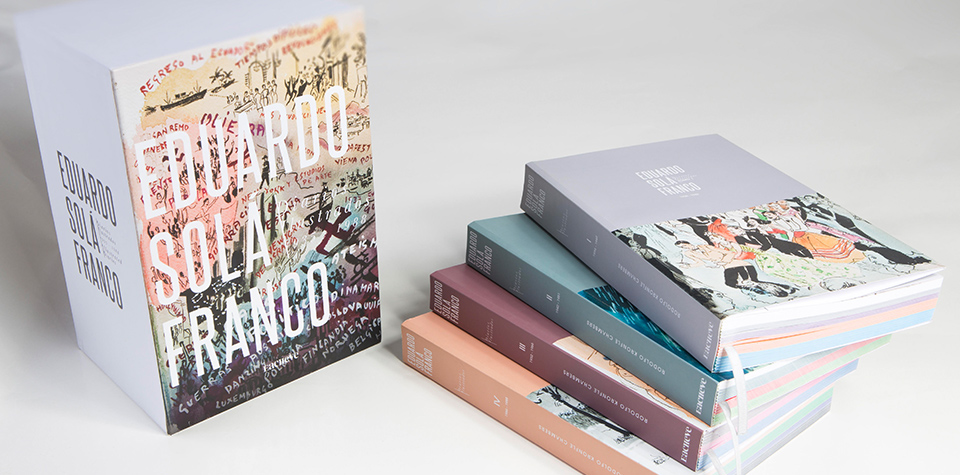Eduardo Solá Franco
The diaries contain a detailed record of the cultural sphere in which the artist lived during the core part of the century, creatively showing historical and current events that were interspersed with his own daily life. Singers, actors, dancers, musicians, writers and a myriad of personalities parade through the pages, along with the artist’s friends, immersed in a hectic social life that crosses elite environments in South America, the United States and Europe. The vivid account of his travels and the landscapes he glimpsed are interspersed with the vicissitudes of his emotional life, as well as the detail of his creative activity in the various fields in which he ventured, such as theater, film and Literature. The diaries provide a memory in addition to his moods, his health problems, his ideology and his psychic life, in short, of the character Solá, so essential to understand and weigh one of the most complex Ecuadorian creators of history, and without a doubt the most versatile of all.
Edited by Eliana Hidalgo, Rodolfo Kronfle
Texts by Rodolfo Kronfle, James Oles.
2015
Spanish/English
IV volumes of 500 pages Hardback, 25 x 17 cm
ISBN 978-9942-21-276-4
$120,00
Description
On the occasion of the centenary of the birth of the artist Eduardo Solá Franco (Guayaquil, 1915 – Santiago de Chile, 1996), his Illustrated Diaries produced between 1935 and 1988 have just been published by EACHEVE publishing.
For 54 uninterrupted years Solá maintained the production of images that represent his life experiences, annotated with brief descriptions of the events and people that surrounded him. This compendium of watercolors and some collages were compiled in 14 volumes containing 3,282 images, and have been found since this year in the collections of the National Library of Paris, as instructed by the artist in his will.
The diaries contain a detailed record of the cultural sphere in which the artist lived during the core part of the century, creatively showing historical and current events that were interspersed with his own daily life. Singers, actors, dancers, musicians, writers and a myriad of personalities parade through the pages, along with the artist’s friends, immersed in a hectic social life that crosses elite environments in South America, the United States and Europe. The vivid account of his travels and the landscapes that he glimpsed are interspersed with the vicissitudes of his emotional life, as well as the detail of his creative activity in the various fields in which he ventured, such as theater, film and literature. The diaries show a great observer of the human race who looked at the world with acuity from a privileged platform, opening a window to a sensitivity permeated by an upper-class consciousness and a spiritual nature, against the grain of the paths – formalist or vindictive – that marked local art. The diaries provide a memory in addition to his moods, his health problems, his ideology and his psychic life, in short, of the character Solá, so essential to understand and weigh one of the most complex Ecuadorian creators of history, and without a doubt the most versatile of all.
With the aim of disseminating this unique work of universal interest, undoubtedly the most ambitious and impressive work of art produced by any Ecuadorian artist in the 20th century, research was planned dedicated to the study of the diaries, reproduced in their entirety in a four-volume compendium. Rodolfo Kronfle Chambers’ texts take a tour of the contents of the work, showing how it serves as a master key that allows the decoding of his pictorial and film work. A foreword by Latin American art historian James Oles places the importance of the diaries in a broader context of analysis.
Eduardo Solá Franco was a globetrotter, a refined aesthete and an emotionally tormented alternative being, frequenting the upper social spheres in several countries. His distance from the political left meant that he became distrustful of the institutionalized artistic world of Ecuador; At the same time, his anti-avant-garde stance also left him on the margins of art history. From very early in his career, Eduardo Solá Franco embarked on a creative project of an autobiographical nature that dramatized every aspect of his conflicted life experience: without a doubt his greatest achievement is the extraordinary way in which he tells us the story that unfolds. on these pages.
Photos: Gonzalo Vargas







